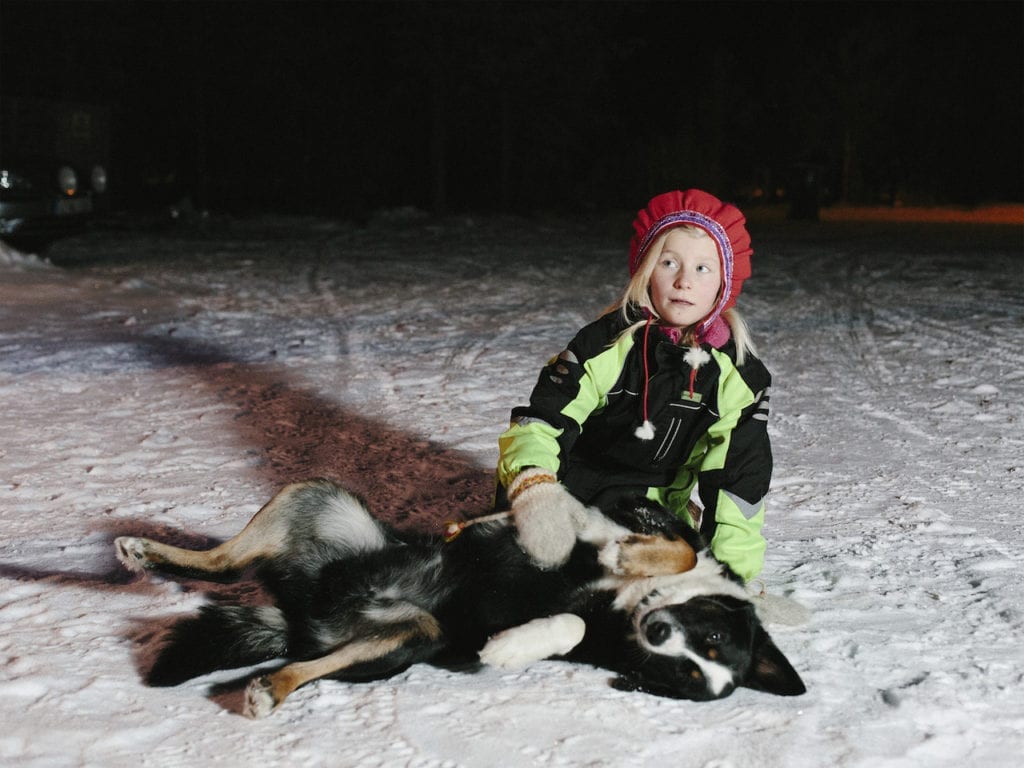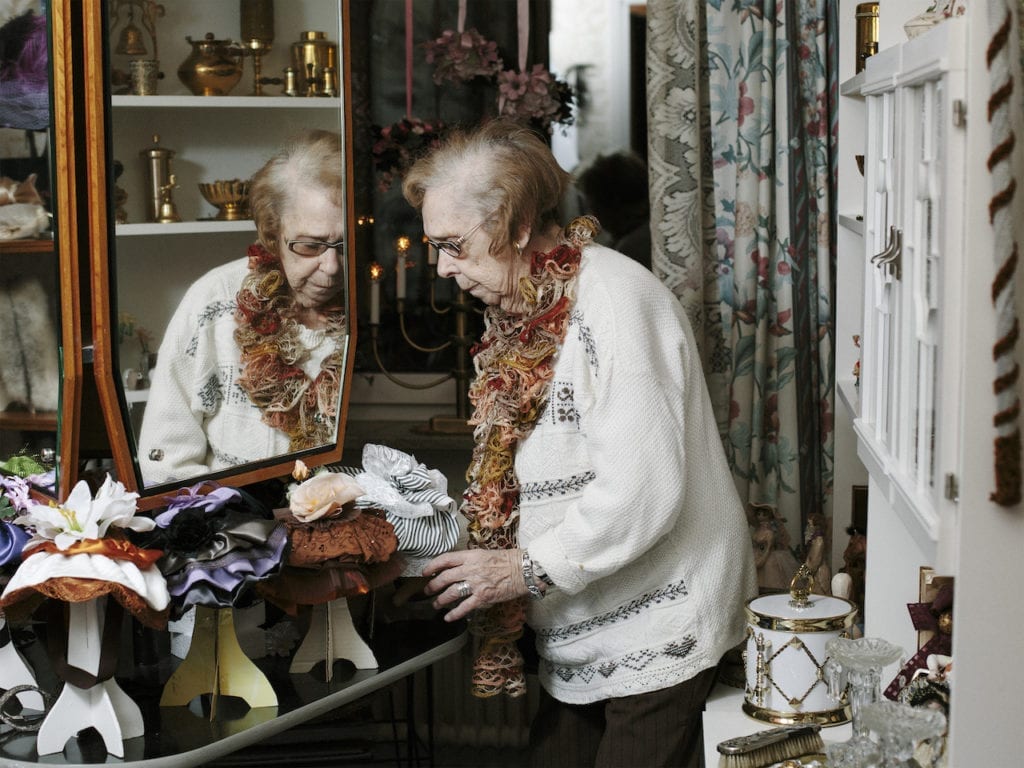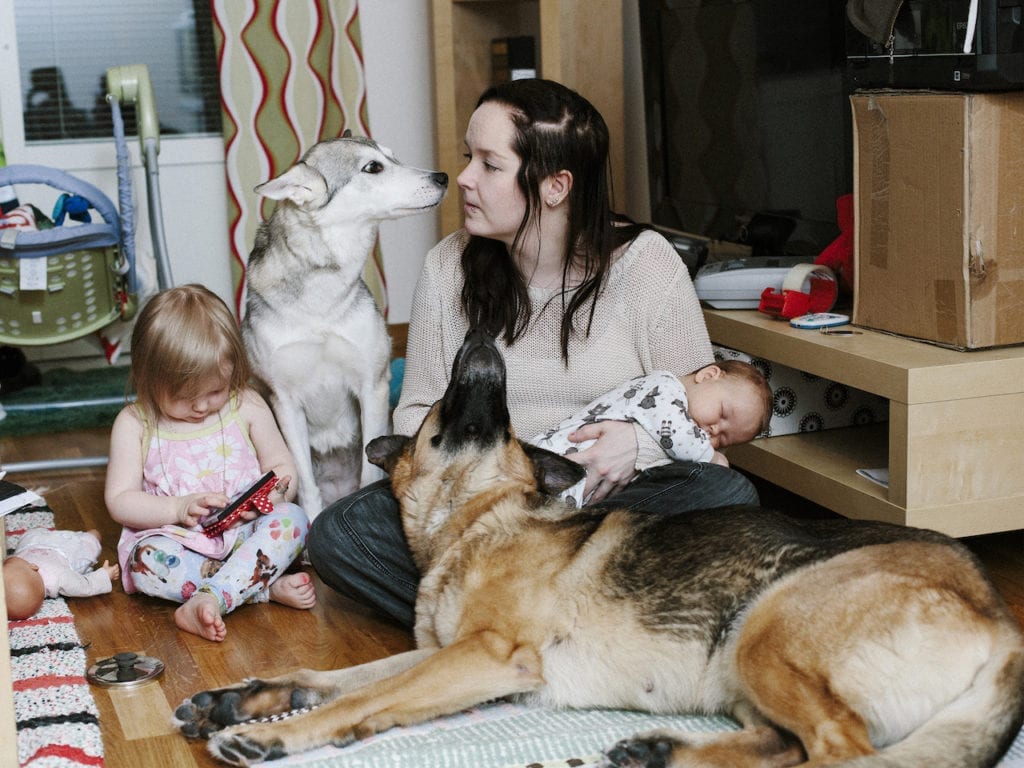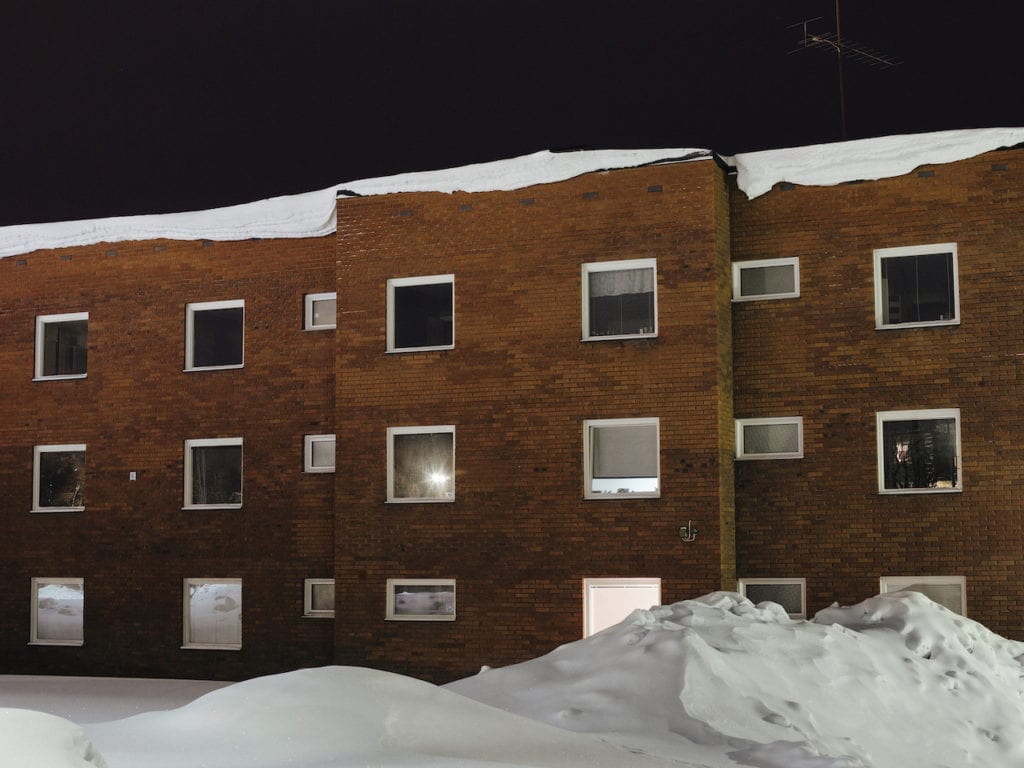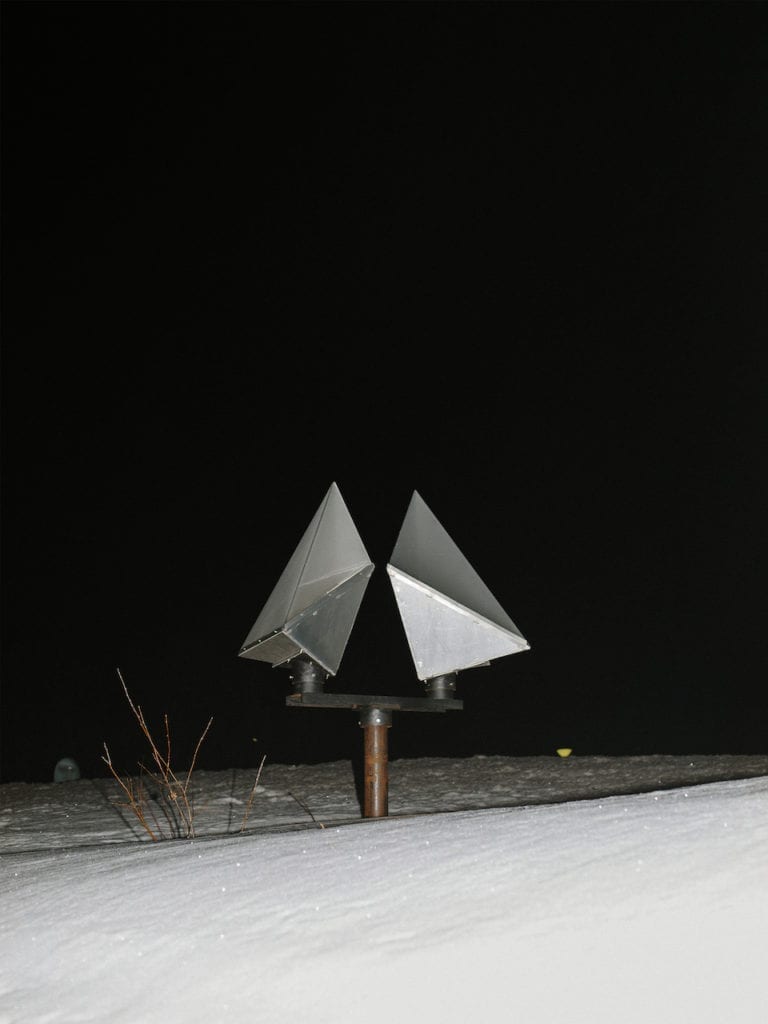“Every night at 2am there is an explosion in Kiruna, caused by the dynamite used to extract iron from the mine, and the earth shakes,” says Katrin Streicher. “When I read about this, I was curious. I went there to see what was happening with my own eyes.”
Her series, Night Time Tremors, tells the story of a city being slowly swallowed by the ground. Located inside the Arctic Circle in Sweden, Kiruna was built on one of the largest iron ore deposits in the world, and sits on top of a network of mines. The nightly blasts, which have been going on for more than a century, are designed to tunnel in further, but they are also creating cracks and deformities in the landscape, which edge 40m closer every year.
A particularly massive extraction in 2007 caused an intrusion in the ground, and the plan now is to move the city 3km away – but exactly what will happen, and when, is still not clear. Despite this, life goes on for the locals, many of whom depend on the mines for their livelihood.
“I saw a very stoic reaction from the people living there,” says the photographer, who has been working in Kiruna since 2013, staying with locals on each trip. “Everyone knows that the future isn’t clear, they don’t know whether they will move somewhere else, or if the kids will live there, but for them it’s normality. You have to keep with your daily routine.”
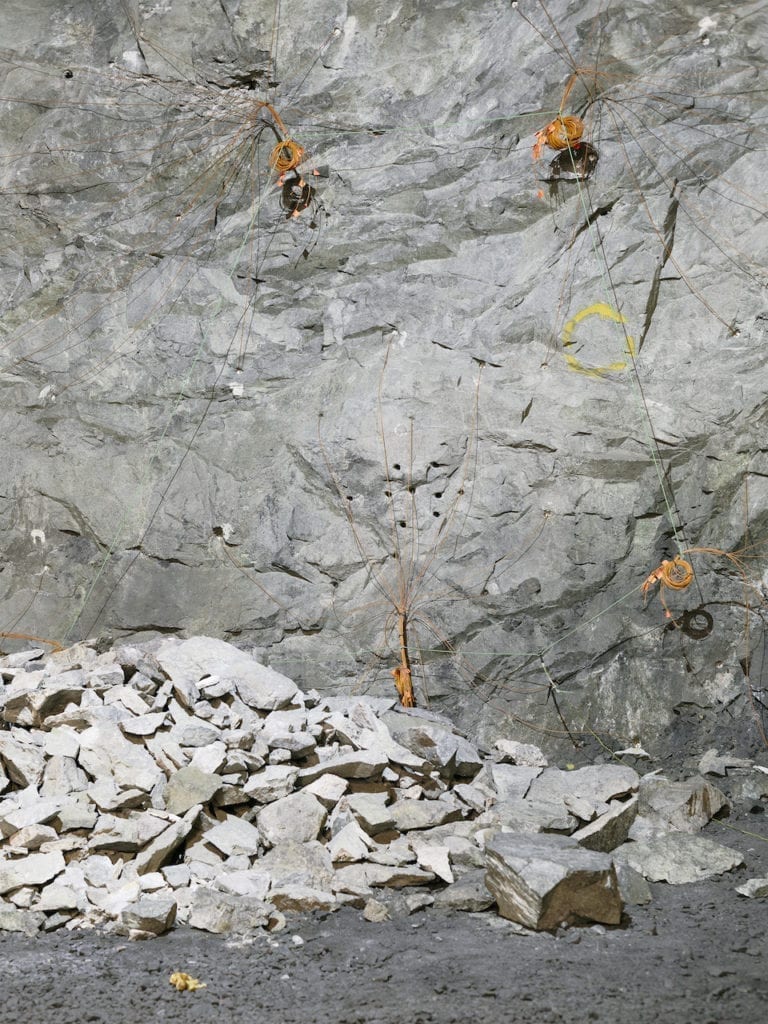
For her, photography is a “tool to tell stories”, she says, and she’s now starting a new project on a small village in Germany. “It’s a 700-year-old town surrounded by open-pit mines, but families are still living there, so I will start to photograph there this summer,” she says. “What it is interesting is that, contrary to what is happening in Kiruna, the people are really trying to be visible, because they don’t earn money from the mine. It’s a different set up.”
www.katrinstreicher.com
